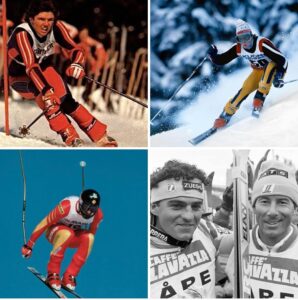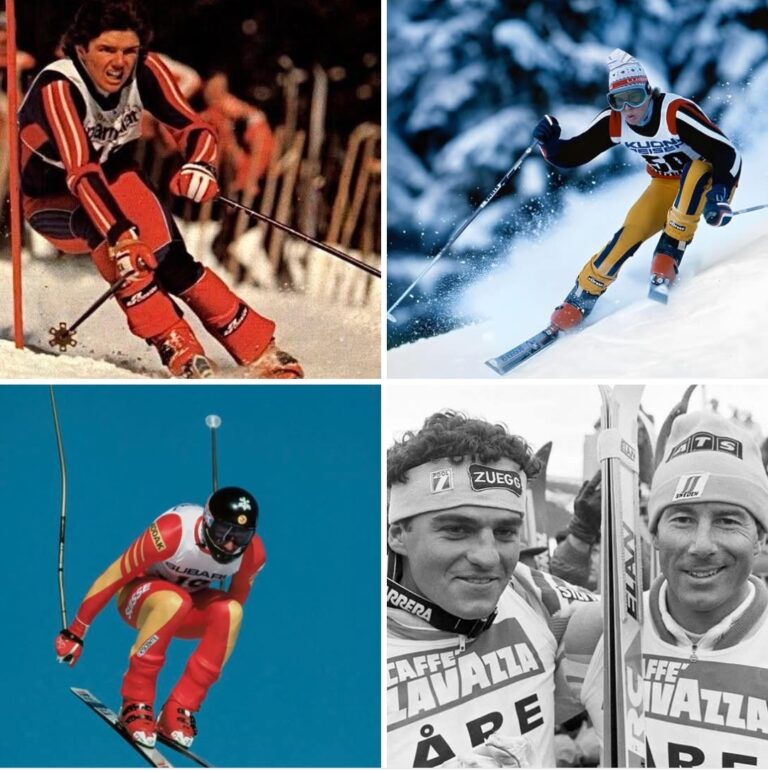The Greatest of the Eighties: Alpine Skiing’s Golden Era
By [Your Name], August 30, 2025
As the ski season drew to a close in Saalbach in 1980, the alpine skiing world was already witnessing the dawn of a transformative decade, one defined by fierce competition, technical innovation, and a roster of legendary names who would etch their marks into the sport’s history. At the forefront was Sweden’s Ingemar Stenmark, whose dominance in the late 1970s carried into the new decade with two Olympic gold medals and a burgeoning tally of over 50 World Cup victories. Yet, the 1980s brought fresh challengers, rule changes, and the rise of versatile all-rounders, making it one of the most exhilarating eras in alpine skiing.
Stenmark, the slalom and giant slalom maestro, faced stiffer competition as the decade unfolded. The American Mahre brothers, Phil and Steve, pushed him hard in technical disciplines during their European campaigns. Meanwhile, changes in the World Cup format, including the introduction of the Super-G, favored skiers proficient in speed events, opening the door for a new breed of talent. The 1980s became a battleground for some of the sport’s greatest icons: Andreas Wenzel, Marc Girardelli, Pirmin Zurbriggen, and Alberto Tomba.
Andreas Wenzel, the 1980 overall World Cup champion, epitomized the era’s growing diversity. Born in West Germany but competing for Liechtenstein, Wenzel was coached by his father, a former East German skier who settled in the tiny principality. Alongside his sister Hanni and the Frommelt brothers, Wenzel helped put Liechtenstein on the alpine map. His 1980 season was a triumph, with Olympic silver and bronze medals and 17 World Cup victories across his career, showcasing his versatility in both technical and speed events.
Marc Girardelli, an Austrian competing for Luxembourg, emerged as one of the decade’s defining figures. With an unmatched five overall World Cup titles and 46 race victories across all alpine disciplines, Girardelli’s dominance was undeniable. His only regret? Missing the 1984 Sarajevo Olympics due to his Luxembourg citizenship, which barred him from competing despite being a gold-medal favorite. Nevertheless, his World Championship successes and all-around prowess cemented his legacy as a titan of the sport.
Switzerland’s Pirmin Zurbriggen was another standout, blending speed and finesse with an Olympic gold in downhill at the 1988 Calgary Games. Though he “only” secured four overall World Cup titles and 40 victories, Zurbriggen’s ability to win in every discipline made him a formidable rival. His Sarajevo Olympics in 1984 were less kind, with a fourth-place finish in downhill and struggles in slalom, but his consistency and charisma made him a fan favorite in the Upper Rhone Valley and beyond.
Then there was Alberto Tomba, the flamboyant Italian who brought a new energy to the sport. Unlike his peers, Tomba hailed not from the Alps but from Bologna, learning to ski at his family’s Cortina retreat. Bursting onto the World Cup scene in 1985, he claimed his first slalom victory in Sestriere in 1987. The 1988 Calgary Olympics saw “La Bomba” explode, winning gold in both slalom and giant slalom. Though the 1989 World Championships disappointed, Tomba’s decision to train under Gustav Thöni proved a masterstroke, leading to another Olympic gold and 50 World Cup victories—second only to Stenmark’s record 86.
The 1980s alpine skiing scene was a crucible of talent, where Stenmark’s technical brilliance met the all-around mastery of Wenzel, Girardelli, Zurbriggen, and Tomba. Social media platform X has seen fans reminisce about the era, with one user posting, “The 80s were peak skiing—Stenmark’s precision, Tomba’s flair, Girardelli’s grit. Nothing like it!” Another wrote, “Zurbriggen’s Olympic gold, Tomba’s swagger—those were the days!”
As we reflect on this golden era, the legacies of these skiers endure. Stenmark’s record, Girardelli’s versatility, Zurbriggen’s triumphs, and Tomba’s charisma continue to inspire. The 1980s didn’t just shape alpine skiing—they defined it, leaving a timeless blueprint for greatness on the slopes.
